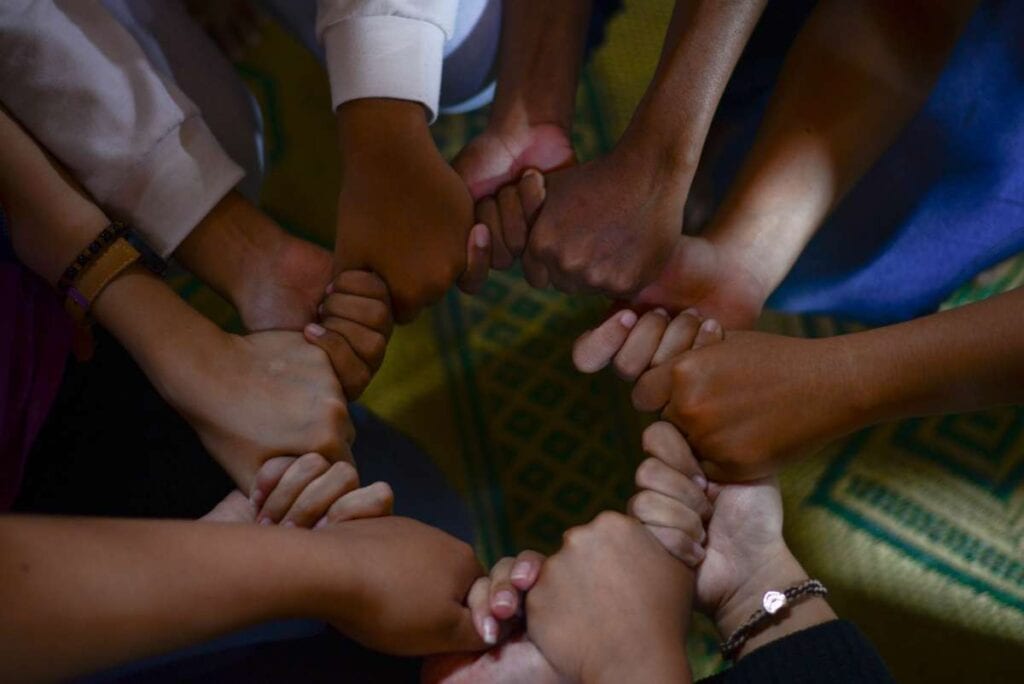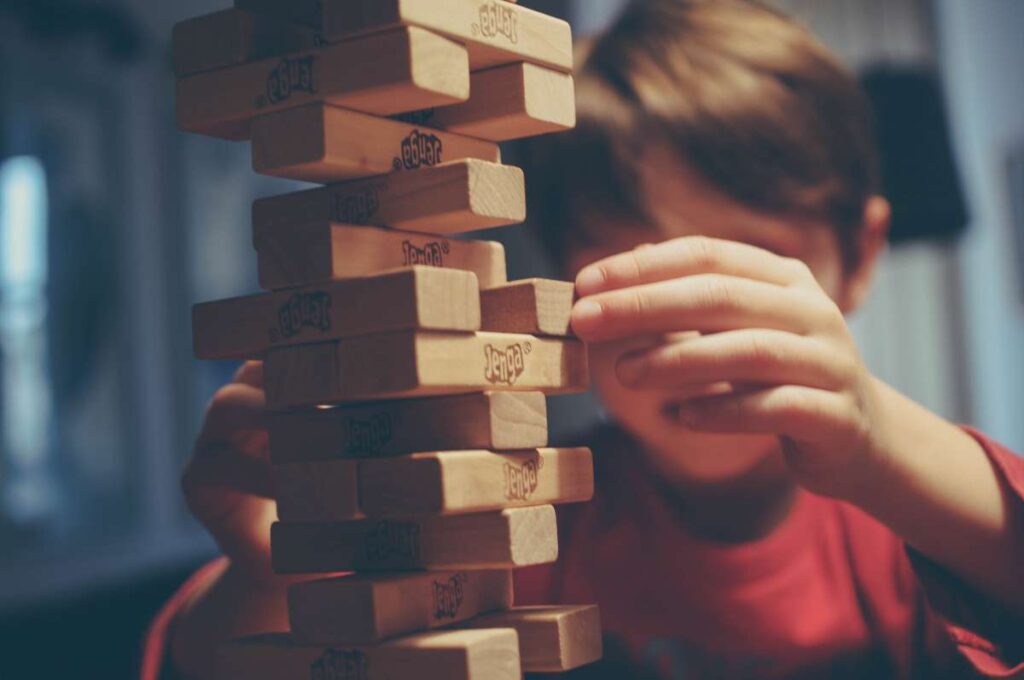It's hard for everyone when family members can't get together as often as they'd want. Reunification therapy can help broken families heal and become stronger than before. Most courses of treatment using this approach last little more than a few months. The therapist will work with both parents and children during this time to resolve any issues that have surfaced as a result of the divorce or separation. Reunification therapy has the potential to help families heal the wounds of separation and move forwards more effectively than they have in the past. In case you're considering reunification therapy for your own family, here's everything you need to know about how it works.
Frequently Asked Questions
During the course of treatment, which lasts for many days, clients meet with counsellors and social workers who are qualified to foster the growth of trust and communication.
If either of the parents does not comply with the process, it will not be successful. If the child's primary caregiver does not comply with the process, the child will not have the motivation to participate in it.
If your parent and child no longer have a relationship with one another, there is an increased likelihood that the reunification process will be unsuccessful. Additionally, get in touch with friends and family members who may be able to lend a helping hand after the reuniting of your families. Do not be afraid to seek for additional help if you believe you require it and feel that you need it.
They are able to return to a secure and constant environment, complete with routines that they are familiar with and comprehend thanks to the reunification. It's just one of the many ways that foster parents help children lead lives that are less stressful, better for their mental health, and happier overall.
What Exactly Is The Reunification Therapy All About?
Reunification therapy is a form of family therapy in which the primary goal is to restore or reestablish a broken relationship, most often between a parent and child. It stresses the importance of being together, promotes open lines of communication, and seeks to mend any rifts that may have formed. The treatment may aim to mend family ties or deal with the underlying causes of the rift.
Since rebuilding trust between parent and child is the primary goal of this type of therapy, it is essential that it progress at the child's pace. Reuniting families is a process that can take a long time, but there are also shorter, more concentrated programmes available.
Since rebuilding trust between parent and child is the primary goal of this type of therapy, it is essential that it progress at the child's pace.
Putting Broken Parent-Child Relationships Back Together Again
Unfortunately, some parents cave in at the first sign of resistance from their child regarding visits, prolonging the issue by months or even years. Usually, telling the kids that their parents aren't getting along isn't what's best for them, since they need to know that both of their parents care about raising them. Requesting mediation as a first step in trying to resolve differences with the other parent is one of the best options in the vast majority of cases. The non-custodial parent can seek the court to mandate reunification therapy to help them reconnect with their children if the custodial parent refuses to participate in mediation or if mediation fails to produce a resolution. A licenced therapist who is familiar with and has worked with families going through the divorce process will be appointed by the court.
Reunification therapy should be ordered by the court only if both parents are willing to take part in the therapy. It should also describe permissible treatments, offer criteria for the engagement of extended family members, outline payment arrangements, and detail the repercussions for non-compliance with the order, in addition to clarifying the court's particular concerns and therapeutic goals. Imagine things are more problematic due to things like a past of domestic violence, mental illness, substance abuse, or incarceration. In such a circumstance, the order must also set parameters for how family members can contact one another to guarantee their safety. The family reunification counsellor will have access to any pertinent files previously maintained by other professionals or agencies.
This article will help you make a decision about Rehab Treatment Melbourne fees for different treatments.
Different Forms Of Family Reunification Therapy

Most of the time, reunification counselling is done after a divorce with significant conflict. A judge may mandate this sort of counselling where there have been major fights and conflicts between a parent and child as a result of a divorce or other legal processes. When a court orders a family to reunite after a divorce, the process often include shared parenting and visitation between the two former spouses.
Reunification therapy is an option for families who have had a child removed from their home for various reasons, such as neglect, abuse, or the need to protect other children in the home. This situation, however, arises far less frequently than the others. The purpose of family reunification in such cases is to provide a safe place to stay for all involved.
Techniques
Since reunification therapy is a subset of family therapy, a therapist with expertise in this area may employ techniques that are standard fare in other contexts. Not to be forgotten, however, are the unique considerations of reunion treatment.
The Challenges of Co-Parenting
When healing from a high-conflict divorce necessitates reunification counselling, co-parenting work is a crucial component of the process. The term "co-parenting" is used to describe when two or more adults, including stepparents, share parental responsibilities for a child.
One of the things I tell separated parents is, "If you got along great, you would still be married to each other." The inability of the parents to cooperate for the benefit of their children is a common consequence of the conflict that led to the divorce. In addition, if the need for treatment stems from one parent isolating the child from the other parent, the child may need to work through feelings of hurt and anger as part of the reunion counselling process.
It's fair to say that co-parenting work is a combination of parenting and marital counselling for formerly married parents.
My standard line of advice to divorcing parents is, "If you got along well, you would still be married to each other." Most fights that end in divorce are about something that makes it hard for ex-spouses to cooperate for their kids.
Attachment Work
When the parent-child connection has deteriorated, it is often recommended or even necessary to intervene in order to increase the likelihood that the family can be reunited. It might be as easy as just chatting, or it could entail mediating a conversation about a disagreement you've had in the past.
Skills in Communication and Methods of Conflict Resolution
Improving one's communication skills not only helps family members work through existing disputes, but also prepares them to handle future problems as they develop. Each member of the family develops the skills necessary to have meaningful and productive conversations about any topic, no matter how sensitive or difficult it may be.
The Methods Behind the Administration of Reunification Therapy
Taking part in reunification therapy is entirely optional, but may be mandated in exceptional cases. In an effort to prevent one parent from being estranged from the children as a result of a divorce, the courts may require one or both parents to participate in reunion counselling. The parents of a family may look at alternative family dynamics if they believe there is opportunity for improvement in the way their family currently operates.
Reunification therapy can be challenging when kids are hesitant or unsure about seeing their parents again. It can be challenging, though, when counselling is mandated by the legal system. In situations when not everyone is on board with changing the status quo, therapists are typically brought in to help shift many dynamics, some of which may have been in place for a long time and are only held together by a thread. Although many people find the idea of going to therapy to be daunting, especially if it is ordered by the court, many families seek out counselling in order to heal and become fully functional again.
Evaluation as well as Getting Ready
Initial steps include conducting a family assessment. Custody evaluations, existing court orders, and parenting agreements addressing custody and visitation must all be reviewed in a private meeting with each parent. If the therapist believes it is necessary, they may also consult with other involved specialists, such as a parenting coordinator. However, if the custodial parent is resistant to therapy, the therapist will still do their utmost to encourage the children to participate voluntarily by emphasising the benefits to the children. Divorce brings up a host of complicated family dynamics, and parents will learn about these dynamics and the ways in which they can lead children to choose sides and hurt the family as a whole.
No assumptions will be made by the therapist regarding the client's past or present when the session begins. Although the non-custodial parent typically casts blame on the custodial parent, there are very few instances in which one spouse is in the right and the other is in the wrong when it comes to visitation rights and child custody arrangements. The custodial parent has the right to enquire about the whereabouts of the noncustodial parent. Trying to make one parent feel responsible for their child's actions is unproductive. Instead, a good therapist builds rapport with both parents and works with them to improve the lives of the children in their care.
The therapist meets with each child separately, out of earshot of the other kids and away from the parents. In most cases, children do not show substantial differences in their tolerance for physical touch. Younger siblings may be recruited by their older counterparts in a conspiracy against a parent who is unpopular. The therapist will encourage children to discuss their problems and will listen carefully to their concerns. While many complaints may have some merit, those that call for limiting or eliminating visitation between parents and children are typically not of a nature or severity to warrant such drastic action. After a difficult divorce, a child's complaints may become magnified in their imagination. The therapist will help the child see the value in keeping open lines of communication with both parents for the sake of the child's future happiness.
Integration of the Family: Sessions for Couples and Individuals
Once the therapist has finished speaking with each family member separately, they will visit with the child in the presence of the noncustodial parent. Together with the parent, the child will be taught how to have more constructive and blame-free relationships with others throughout these sessions, with the goal of improving the quality of the family's life as a whole. The therapist can also utilise these meetings to help the family organise events and outings that will help the child develop their goals.
The therapist will usually additionally monitor the child's interactions with the custodial parent. Many parents fail to recognise the unintentional cues they send to their kids by the words they use and the behaviours they set. One-on-one sessions with each parent could focus on modifying behaviour patterns that may be contributing to the current situation.
The goal of treatment is to progressively increase the child's time with the non-custodial parent until their relationship is normal. Are you looking for the best rehab centre? Then Refocus Rehab Melbourne is the answer.
The Outcomes Of Family Reunification Treatment
It's not just the dynamics of each parent-child relationship in the past that play a role in how well treatment works; the present dynamics of all the characters involved matter, too. These factors also contribute to the heterogeneity of therapy results. However, in most cases, kids don't take kindly to being forced to comply with the demands of a parent with whom they had a tense past. The child in this case is being coerced into doing what the parents want. Adolescents are especially vulnerable because their brains are wired to separate from their parents. Adolescents are particularly vulnerable to this problem. Therefore, it may be beneficial to focus on developing a stronger emotional connection with the other person rather than on the ultimate aim of keeping to a predetermined schedule.
In most cases, parents need to commit to therapy for a longer period of time in order to see significant gains. For this reason, it is recommended that clients attend anywhere from eight to twelve sessions, with visits from third parties occuring at increasing intervals. Throughout this period, the therapist will keep the court informed of progress achieved during treatment. The therapist will submit a final report to the court after the procedure is complete.
How Does The Therapy For Family Reunification Look Like?

In most cases, the first stage in the reunification therapy process will be an intake evaluation conducted by a qualified therapist. In order to more effectively eliminate difficulties, boost family communication, and make everyone feel more at ease within the family unit, these evaluations discover what the key concerns may be between the parents and the children.
Afterwards, the therapists will likely have the parents and children participate in activities designed to foster greater bonding and dialogue. Activities like role-playing and improvisational theatre are examples of this. Playing games is one of many simple activities that can help young children feel more secure, attached, and at ease. The older the child, the more likely it is that talking therapy will be necessary to overcome both the child's reluctance and the parents' effort to be there. It doesn't matter how old the patient is, talk therapy will most likely be a part of their treatment plan.
To gauge the treatment's success, families are often asked to fill out more surveys as the process progresses. If the family is making progress, the therapist will keep going in the same direction; otherwise, new strategies will be introduced. Nonetheless, if the relationship remains troubled after a set period of time, the court may reconsider the order or consider alternative measures, such as terminating the parental rights of one of the parties.
When Is It Not Taken Into Account?
The chance of the court mandating such treatment rises dramatically if the parent is known to have a substance use disorder. If the court nonetheless orders therapy despite these reservations, it is usually merely to facilitate an initial, supervised meeting between the parents and the children, not to encourage the development of a long-term, confidential bond between the adults. However, in cases involving abuse, many courts may still mandate counselling in an effort to establish a relationship between the persons involved, no matter how tenuous that link may be. This is so because many studies have shown that children do better when they have a strong, stable family structure.
There are, however, conditions that must be met before a judge can order reunification treatment to begin. Most of the time, the victim has suffered extreme abuse or has been repeatedly abandoned. When one parent abuses their position of primary custody, the other often chooses to have their parental rights terminated rather than seek treatment or rehabilitation for themselves.
What Kinds of Problems Can Be Helped by Reunification Therapy?
- Establishing guidelines for co-parenting When parents separate or divorce, what does it mean for them to be designated co-parents? Perhaps you didn't give much consideration to having children outside of a romantic relationship when you envisioned your future family. Reunification can help you and the other parent come to terms with one another, which is good for the kids, and set up limits and routines that are in the kids' best interests.
- Estrangement: Distancing is another issue that reunification can help with. A child's relationship with one parent may suffer as a result of the divorce. The term "estrangement" is used to describe the separation between relatives. Reunification is an effective strategy for dealing with the child's emotions and mending the rift in the parent-child bond.
- Alienation, on the other hand, describes the situation in which a child decides to reject one parent in favour of the other because of false beliefs about the latter's potential for damage. (If a child avoids contact with an abusive parent, this is not indicative of alienation.) When a child has grown distant from one parent, reunification therapy can help them build a more realistic understanding of that parent's character and actions. This can pave the way for a more positive and productive reconnection.
- Safeguarding preparations: Finally, it's worth considering how reunification can improve security strategies. A primary goal of the reunion therapy is to establish and implement the mandatory safety precautions to prevent the recurrence of any previous troubles.
Advantages to the Family Reunification Process
Reunification therapy may be an essential part of mending a shattered family unit that has been alienated or separated. It has the potential to help parents repair their relationship with their children after a contentious divorce, and it can facilitate the parents' ability to reach an agreement in the best interests of their children.
Effectiveness
Reunion therapy vary in how effective they are. Any form of treatment relies on active engagement by the client to be effective, but persons who are ordered by the court to participate may be less likely to do so. One parent may also forbid the other's child from attempting reconciliation after alienating them from the child's life.
However, reunification therapists can draw from a wide range of tried-and-true approaches.
Joint sessions between the parents, the therapist's willingness to confront and remove barriers to treatment, and the therapist's flexibility with the treatment paradigm have all been found to be significant predictors of success in reunification therapy.
Things That Should Be Considered
While reunion therapy is often recommended for families experiencing alienation issues, it is crucial to remember that this is not the sole option for doing so. Divorce is an extremely taxing and unpleasant experience, thus therapy aimed at mending broken bonds within the family might be beneficial.
A parent who suspects parental alienation can either seek reunion treatment on their own or petition the court to order it. On the other hand, confidentiality may be compromised if treatment is ordered by the court, as the judge may need to know specifics regarding the treatment, such as what was covered during sessions.
Where Should One Begin?
Divorcing partners often experience a wide range of sensations, from anger to sadness. Despite knowing that they will not be able to reconcile, some couples nonetheless choose to go through reunification therapy. In the long run, this could help establish a solid foundation for cooperative parenting.
You should expect them to know where to find local providers of reunification therapy if you are ordered by a court to participate or if your lawyer recommends it. They should also know about your recommendation to research reunification. Another option is to look for therapists in your area who focus on family reunion.
What do you think about reunification? Many people who go through reunification therapy are nervous about the process and don't know what to expect from their individual sessions. It's important to know that these sentiments are common, and that you can discuss your worries with your therapist. They must address any questions or concerns you might have about the treatment.
See our list of available Rehabilitation Programmes to help you make an informed decision for your treatment.
Some parents may be hesitant to cooperate with the therapist because they are afraid that the other parent would "manipulate" them or that their child will be "forced" to do things that are uncomfortable for them. Some parents are concerned that their kid may be "forced" to do things he or she doesn't enjoy. It is fine and necessary to share your feelings about the reunion with your therapist. A therapist providing this service must be equipped to handle such issues and work at a pace that is agreeable to all family members.
Reunification counselling is an emotionally draining and difficult procedure. In the process of strengthening your bond with your kids, you should expect to face obstacles like this.
Conclusion
Reunification therapy is a form of family therapy in which the primary goal is to restore or reestablish a broken relationship, most often between a parent and child. Most courses of treatment last little more than a few months, but there are also shorter, more concentrated programmes available. Reunification therapy is an option for families who have had a child removed from their home for various reasons, such as neglect, abuse, or the need to protect other children in the home. The purpose of family reunification in such cases is to provide a safe place to stay for all involved. When the parent-child connection has deteriorated, it is often recommended or even necessary to intervene in order to increase the likelihood that the family can be reunited.
Reunification therapy can be challenging when kids are hesitant or unsure about seeing their parents again. Many families seek out counselling to heal and become fully functional again. Divorce brings up a host of complicated family dynamics, and parents will learn about the ways in which they can lead children to choose sides. A good therapist builds rapport with both parents and works with them to improve the lives of the children in their care. After a difficult divorce, a child's complaints may become magnified in their imagination.
The goal of treatment is to progressively increase the child's time with the non-custodial parent until their relationship is normal. Adolescents are especially vulnerable to this as their brains are wired to separate from their parents. The therapist will submit a final report to the court after the procedure is complete. Reunification therapy aims to improve family communication and make everyone feel more at ease within the family unit. The older the child, the more likely it is that talking therapy will be necessary to overcome both the child's reluctance and the parents' effort to be there.
Reunification therapy may be an essential part of mending a shattered family unit that has been alienated or separated. It can help parents repair their relationship with their children after a contentious divorce. Reunification therapists can draw from a wide range of tried-and-true approaches. Reunification counselling is an emotionally draining and difficult procedure. Some parents may be hesitant to cooperate with the therapist because they are afraid that the other parent would "manipulate" them or their child will be "forced" to do things that are uncomfortable for them.
Content Summary
- Reunification therapy can help broken families heal and become stronger than before.
- The therapist will work with both parents and children during this time to resolve any issues that have surfaced as a result of the divorce or separation.
- Reunification therapy has the potential to help families heal the wounds of separation and move forwards more effectively than they have in the past.
- In case you're considering reunification therapy for your own family, here's everything you need to know about how it works.
- What Exactly Is The Reunification Therapy All About?
- Reunification therapy is a form of family therapy in which the primary goal is to restore or reestablish a broken relationship, most often between a parent and child.
- It stresses the importance of being together, promotes open lines of communication, and seeks to mend any rifts that may have formed.
- The treatment may aim to mend family ties or deal with the underlying causes of the rift.
- Since rebuilding trust between parent and child is the primary goal of this type of therapy, it is essential that it progress at the child's pace.
- Reuniting families is a process that can take a long time, but there are also shorter, more concentrated programmes available.
- Usually, telling the kids that their parents aren't getting along isn't what's best for them, since they need to know that both of their parents care about raising them.
- Requesting mediation as a first step in trying to resolve differences with the other parent is one of the best options in the vast majority of cases.
- The non-custodial parent can seek the court to mandate reunification therapy to help them reconnect with their children if the custodial parent refuses to participate in mediation or if mediation fails to produce a resolution.
- Reunification therapy should be ordered by the court only if both parents are willing to take part in the therapy.
- The family reunification counsellor will have access to any pertinent files previously maintained by other professionals or agencies.
- This article will help you make a decision about Rehab Treatment Melbourne fees for different treatments.
- Different Forms Of Family Reunification Therapy
- Most of the time, reunification counselling is done after a divorce with significant conflict.
- A judge may mandate this sort of counselling where there have been major fights and conflicts between a parent and child as a result of a divorce or other legal processes.
- When a court orders a family to reunite after a divorce, the process often include shared parenting and visitation between the two former spouses.
- The Challenges of Co-Parenting When healing from a high-conflict divorce necessitates reunification counselling, co-parenting work is a crucial component of the process.
- It's fair to say that co-parenting work is a combination of parenting and marital counselling for formerly married parents.
- Skills in Communication and Methods of Conflict Resolution Improving one's communication skills not only helps family members work through existing disputes, but also prepares them to handle future problems as they develop.
- Each member of the family develops the skills necessary to have meaningful and productive conversations about any topic, no matter how sensitive or difficult it may be.
- The Methods Behind the Administration of Reunification Therapy Taking part in reunification therapy is entirely optional, but may be mandated in exceptional cases.
- In an effort to prevent one parent from being estranged from the children as a result of a divorce, the courts may require one or both parents to participate in reunion counselling.
- The parents of a family may look at alternative family dynamics if they believe there is opportunity for improvement in the way their family currently operates.
- Reunification therapy can be challenging when kids are hesitant or unsure about seeing their parents again.
- It can be challenging, though, when counselling is mandated by the legal system.
- Although many people find the idea of going to therapy to be daunting, especially if it is ordered by the court, many families seek out counselling in order to heal and become fully functional again.
- Evaluation as well as Getting Ready Initial steps include conducting a family assessment.
- However, if the custodial parent is resistant to therapy, the therapist will still do their utmost to encourage the children to participate voluntarily by emphasising the benefits to the children.
- Divorce brings up a host of complicated family dynamics, and parents will learn about these dynamics and the ways in which they can lead children to choose sides and hurt the family as a whole.
- No assumptions will be made by the therapist regarding the client's past or present when the session begins.
- Although the non-custodial parent typically casts blame on the custodial parent, there are very few instances in which one spouse is in the right and the other is in the wrong when it comes to visitation rights and child custody arrangements.
- The custodial parent has the right to enquire about the whereabouts of the noncustodial parent.
- Instead, a good therapist builds rapport with both parents and works with them to improve the lives of the children in their care.
- The therapist meets with each child separately, out of earshot of the other kids and away from the parents.
- The therapist will help the child see the value in keeping open lines of communication with both parents for the sake of the child's future happiness.
- Integration of the Family: Sessions for Couples and Individuals Once the therapist has finished speaking with each family member separately, they will visit with the child in the presence of the noncustodial parent.
- Together with the parent, the child will be taught how to have more constructive and blame-free relationships with others throughout these sessions, with the goal of improving the quality of the family's life as a whole.
- The therapist will usually additionally monitor the child's interactions with the custodial parent.
- The goal of treatment is to progressively increase the child's time with the non-custodial parent until their relationship is normal.
- Are you looking for the best rehab centre?
- Then Refocus Rehab Melbourne is the answer.
- The Outcomes Of Family Reunification Treatment It's not just the dynamics of each parent-child relationship in the past that play a role in how well treatment works; the present dynamics of all the characters involved matter, too.
- These factors also contribute to the heterogeneity of therapy results.
- However, in most cases, kids don't take kindly to being forced to comply with the demands of a parent with whom they had a tense past.
- The child in this case is being coerced into doing what the parents want.
- Adolescents are particularly vulnerable to this problem.
- Therefore, it may be beneficial to focus on developing a stronger emotional connection with the other person rather than on the ultimate aim of keeping to a predetermined schedule.
- In most cases, parents need to commit to therapy for a longer period of time in order to see significant gains.
- Throughout this period, the therapist will keep the court informed of progress achieved during treatment.
- The therapist will submit a final report to the court after the procedure is complete.
- How Does The Therapy For Family Reunification Look Like?
- In most cases, the first stage in the reunification therapy process will be an intake evaluation conducted by a qualified therapist.
- The older the child, the more likely it is that talking therapy will be necessary to overcome both the child's reluctance and the parents' effort to be there.
- It doesn't matter how old the patient is, talk therapy will most likely be a part of their treatment plan.
- The chance of the court mandating such treatment rises dramatically if the parent is known to have a substance use disorder.
- If the court nonetheless orders therapy despite these reservations, it is usually merely to facilitate an initial, supervised meeting between the parents and the children, not to encourage the development of a long-term, confidential bond between the adults.
- This is so because many studies have shown that children do better when they have a strong, stable family structure.
- There are, however, conditions that must be met before a judge can order reunification treatment to begin.



















